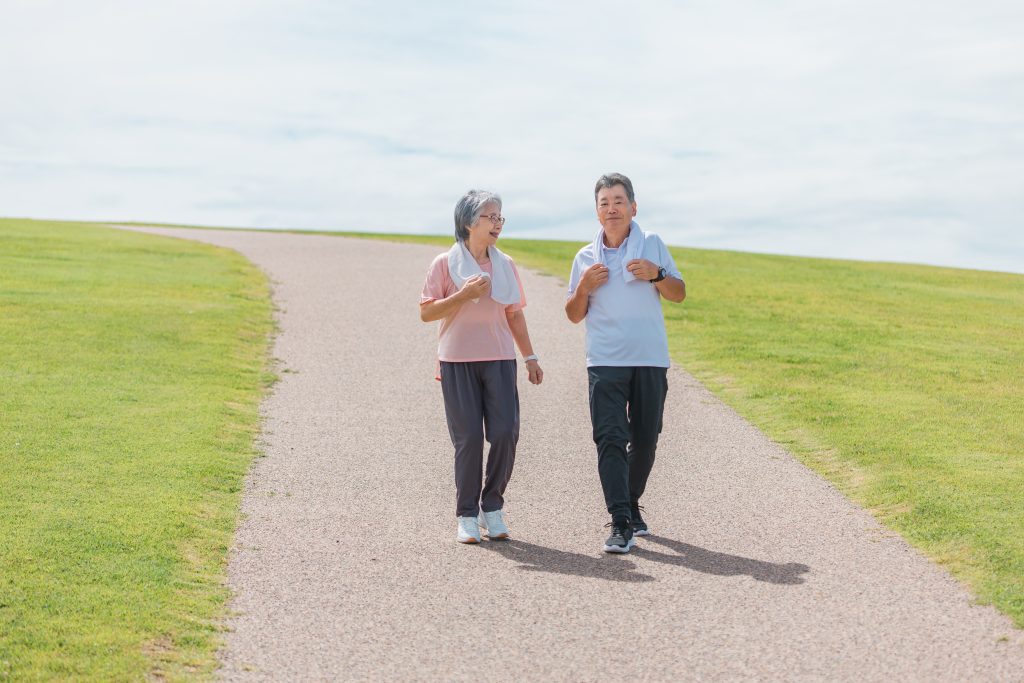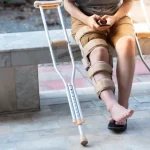With safety tips to follow before and after a fracture
By Kristen Gasnick, PT, DPT
Osteoporosis is a condition that develops from decreased bone mineral density that causes bones to become thin, brittle, and more susceptible to fractures.
While people with osteoporosis should be cautious with everyday activities to avoid breaking a bone, exercising regularly is crucial for increasing bone and muscle strength.
This article will discuss the benefits of physical therapy for osteoporosis, beneficial exercises, what exercises to avoid and finding treatment.
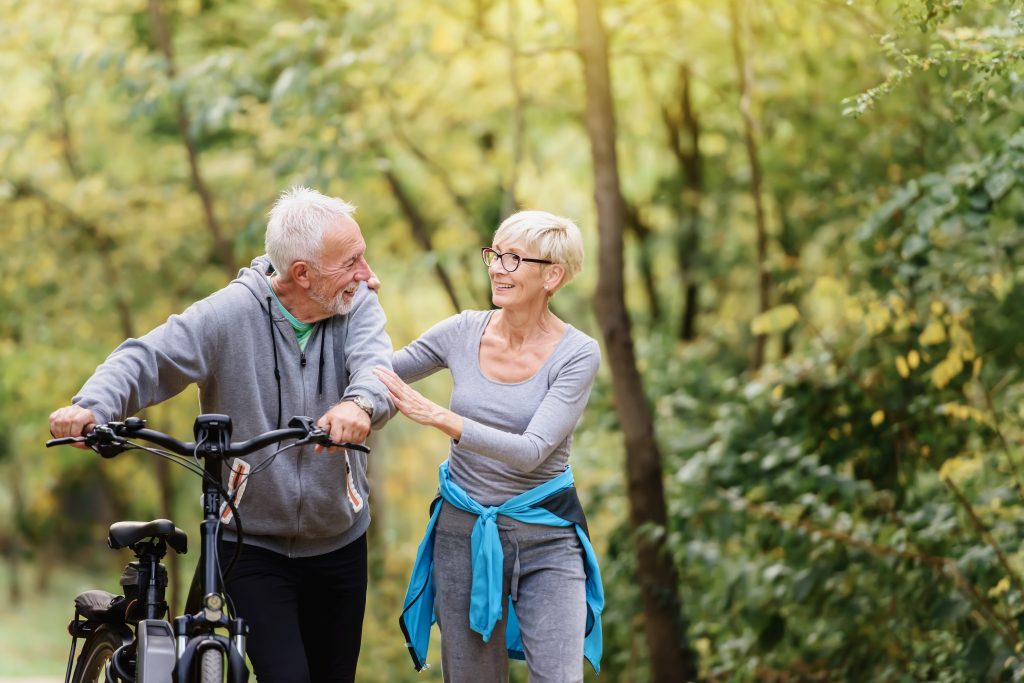
Does Exercise Impact Bone Density?
Bone cells get thicker and stronger in response to beneficial stress from exercise. This response in bone cells is stimulated by:
- Joint reaction forces: Forces from contracting muscles that pull on the bones they are attached to
- Ground reaction forces: Forces through bones (primarily the leg bones) from contact with the ground when standing and moving on your feet
Physical therapy for osteoporosis will involve a selection of therapeutic exercises tailored to your individual needs. These exercises are designed to strengthen key muscle groups that support and stabilize areas of weakness. These exercises protect your bones and improve your balance to decrease your risk of falls.1
Misconceptions Regarding Exercise
Pain, fear of falling, and lack of interest are some of the main reasons that prevent people with osteoporosis from exercising but avoiding exercise and physical activity can worsen osteoporosis and increase your risk of breaking bones.2
Not being active causes muscle stiffness and atrophy (breakdown), resulting in muscle weakness. This also leads to poor balance and bone weakness, which accelerates bone mineral density loss. Exercise and physical activity are crucial to rebuilding muscles and maintaining adequate bone health.2
Who Can Benefit from Physical Therapy?
Bone density naturally decreases over time with aging, especially in people over the age of 65, increasing the risk of developing osteoporosis.3 Because the female hormone estrogen protects bone cells, the natural decline in estrogen levels that occurs in postmenopausal women also significantly increases osteoporosis risk.4
Other risk factors for osteoporosis include:5
- Low body mass
- Certain medications, especially prolonged use of corticosteroids
- Low testosterone in males
- Smoking
- Malnutrition
- Vitamin D deficiency or insufficiency
- Excessive alcohol use
- Family history of osteoporosis
People with the lowest bone mass and the lowest level of previous exercise are likely to benefit the most from increased exercise loading (the amount of exercise you’re doing) to strengthen bones.1
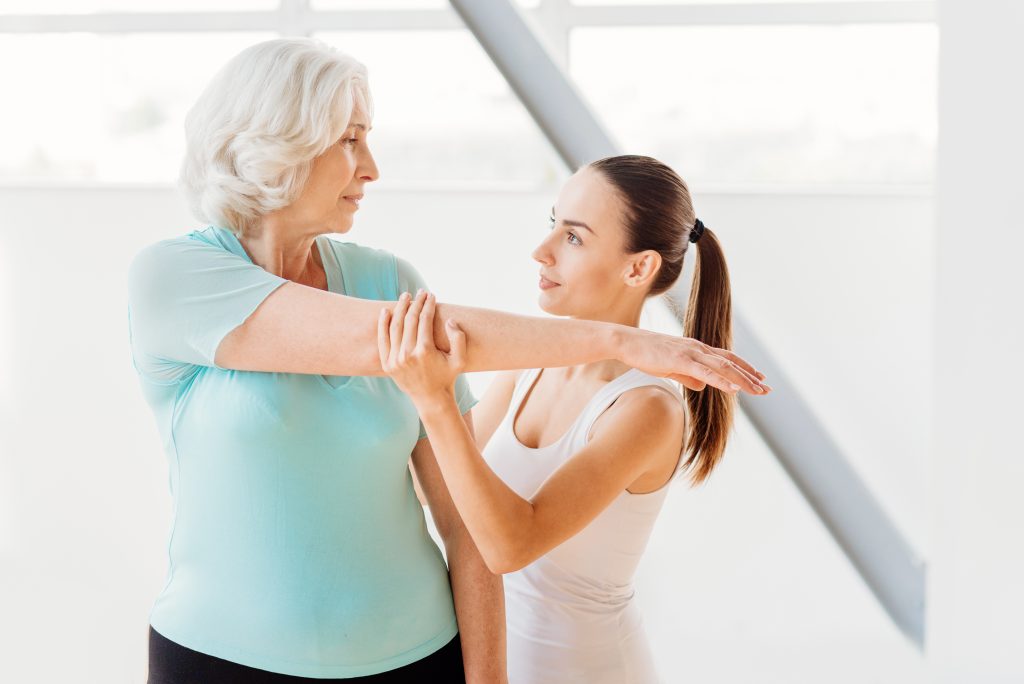
Physical Therapy Exercises for Osteoporosis
A physical therapist will be able to provide you with an individualized exercise plan tailored to your specific needs following a physical examination.
Although there are no definitive guidelines for the exact amount, intensity, and duration of exercises to increase bone strength, weight-bearing exercises that work multiple muscle groups are generally the most beneficial. Setting goals and choosing exercises you like will help you stick with your workouts over the long term.1
Weight-Bearing Exercises
Weight-bearing exercises are important for slowing bone loss and improving bone mineral density. Weight-bearing exercises also significantly strengthen muscles to work together to stabilize and support joints.1
Specific weight-bearing exercises that can increase muscle and bone strength include squats, step-ups, lunges, and jumping rope. Other weight-bearing activities include jogging, hiking, and stair climbing. Note that if you have osteoporosis, you will need to work up to higher-level exercises, such as plyometrics, jogging, and jumping rope.
Because bone cells adapt to repeated patterns of loading, such as the force from running, changing your movements and exercises is beneficial.1
Non-Weight-Bearing Exercises
Non-weight-bearing exercises are those in which your limbs can move freely without being in contact with the ground. Non-weight-bearing exercises isolate specific muscle groups to help improve balance and stability.
Specific non-weight-bearing exercises that can help strengthen the muscles of the legs and arms include:
- Legs: Multidirectional leg lifts and clam shells
- Arms: Bicep curls, tricep pushdowns, shoulder press, lateral raises, and rows
While non-weight-bearing activities like swimming and cycling are good for improving cardiovascular fitness and general health, these types of activities are not specifically recommended for patients with osteoporosis since they don’t do much to improve bone mineral density.1
Balance and Flexibility
Good balance is crucial for people with osteoporosis to prevent falls and subsequent risk of fractures. Balance exercises include:
- Standing on one foot
- Standing on an unstable surface
- Sidestepping
- Backward walking
- Forward and lateral step-ups
- Weight shifting in different directions
Flexibility is also important to allow muscles to contract properly within their range of motion. Key muscles to stretch to prevent imbalances and improve strength include hip flexors, hamstrings, quadriceps, and calf muscles.
Movements to Avoid
Avoid exercises that involve repetitive bending and twisting, especially when carrying an object, such as sit-ups and crunches, rowing, lifting with a bent spine, certain yoga poses and dance movements, and strenuous house and yard work.1
These positions increase pressure and friction within the spine, which can cause a fracture. Compression fractures of the spine are also more likely to occur when your abdominal muscles are weak and cannot properly stabilize your spine. High-impact exercises like golfing and tennis, which require forceful twisting motions, are also best avoided.1
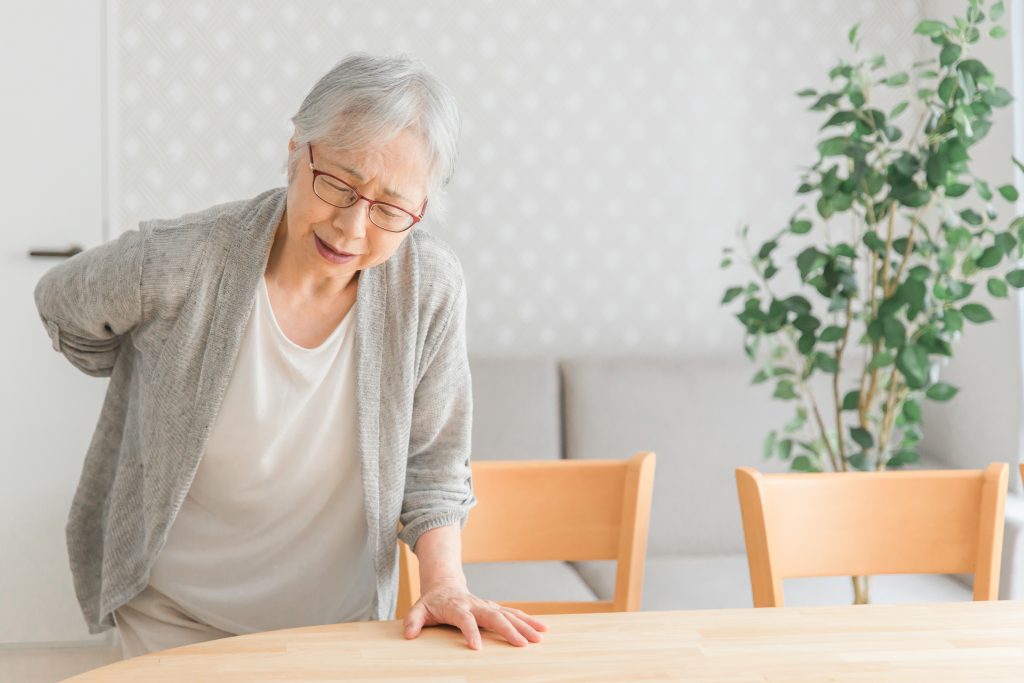
Where to Find a Physical Therapist
While you may be able to get direct access to physical therapy services without a prescription from a referring doctor, some facilities, especially hospitals, still require a prescription from a healthcare provider to treat you at their facility.
Outpatient physical therapy, which is carried out in private clinics, hospitals, and healthcare providers’ offices, is generally appropriate for most people with osteoporosis, especially for fall prevention or following a bone fracture.
Outpatient centers typically see a high volume of patients, so you must be able to have some level of independence to complete exercises and activities with supervision. If you have difficulty and limitations with mobility preventing you from going to an outpatient center safely, home care services may be a better option for you.
Financial Costs
Physical therapy costs will vary depending on your insurance coverage. The sessions generally are two to three times a week for four weeks. After one month of physical therapy, you will be reevaluated to determine if you need more treatment. Coverage for physical therapy services is typically based on medical necessity.
Additional Support
Having a sedentary (inactive) lifestyle involving sitting or lying down for long periods of time leads to weakness and muscle atrophy, poor balance, decreased bone mineral density, and increased risk of falls. It is important to do something physical every day, even if it is just a light activity like walking around your home, cooking, or cleaning.
Relying on friends and family for social support can keep you motivated to stick to an exercise routine. Starting your exercise routine with the help of a physical therapist can give you encouragement.
Video: “EXERCISES FOR THE ELDERLY | SENIOR’S ZONE”
EXERCISES FOR THE ELDERLY/SENIOR’S ZONE. FIRST DIRECTION: REHABILITATION AND SUPPORTIVE THERAPY FOR THE ELDERLY (THERAPEUTIC SET OF EXERCISES). INITIAL STAGE OF REHABILITATION
For additional information about exercises for the elderly | Senior’s zone you can watch a video demonstrating exercises and rehabilitation recommendations.
Summary
Osteoporosis is decreased bone mineral density, which causes bones to become thin, making you more susceptible to fractures. Regular physical activity is important for increasing bone and muscle strength. Incorporating weight-bearing exercises (squats, jogging, stair climbing), non-weight-bearing exercises (leg lifts and bicep curls), and balance and flexibility movements will help improve bone density and muscle strength. A physical therapist will help devise a treatment plan that is best for you.
Conclustion
Exercise is one of the most important and effective treatments for osteoporosis, the weakening of bones that naturally occurs with aging and sedentary behavior. When beginning exercise, remember to listen to your body and start off slowly to avoid injury. Having a strong support system can also help keep you motivated to make regular exercise a part of your everyday life.
FREQUENTLY ASKED QUESTIONS
-
How long should you do physical therapy for osteoporosis?
Physical therapy for osteoporosis will generally run for four weeks, after which you will be reevaluated to determine the next steps. Sometimes you may benefit from more physical therapy, or you will be discharged with a home exercise program to do on your own.
-
Does health insurance cover physical therapy for osteoporosis?
Insurance plans typically cover physical therapy for osteoporosis to increase muscle strength, endurance, and balance to decrease the risk of falls and injuries. Costs of physical therapy will vary depending on your individual insurance coverage.
-
Which exercises make symptoms of osteoporosis worse?
Repeated bending and twisting of the body can increase the risk of vertebral fractures and should be avoided.
-
How do you know if you have brittle bones?
Osteoporosis and osteopenia, conditions classified by low bone mineral density and brittle bones, are diagnosed through a dual-energy X-ray absorptiometry (DEXA) scan. The most common sign of brittle bones is if you break bones easily, especially from light impact.
Sources
- Beck BR, Daly RM, Singh MA, Taaffe DR. Exercise and Sports Science Australia (ESSA) position statement on exercise prescription for the prevention and management of osteoporosis. J Sci Med Sport. 2017 May;20(5):438-445. doi: 10.1016/j.jsams.2016.10.001
- Baert V, Gorus E, Mets T, Bautmans I. Motivators and barriers for physical activity in older adults with osteoporosis. J Geriatr Phys Ther. 2015 Jul-Sep;38(3):105-14. doi: 10.1519/JPT.0000000000000035. PMID: 25594524.
- MedlinePlus. Aging changes in the bones — muscles — joints.
- Johns Hopkins Medicine. Osteoporosis: What you need to know as you age.
- International Osteoporosis Foundation. Risk Factors.
By Kristen Gasnick, PT, DPT
Kristen Gasnick, PT, DPT, is a medical writer and a physical therapist at Holy Name Medical Center in New Jersey.

CHECK OUT THE DEMO VERSION OF OUR WORKOUTS FOR THE REABILITAITON OF the elderly | Senior’s Zone ON YOUTUBE
Our website presents sets of exercises for the rehabilitation of the elderly | Senior’s Zone in the following areas:
-
EXERCISES FOR THE ELDERLY/SENIOR’S ZONE. FIRST DIRECTION: REHABILITATION AND SUPPORTIVE THERAPY FOR THE ELDERLY (THERAPEUTIC SET OF EXERCISES). INITIAL STAGE OF REHABILITATION
-
EXERCISES FOR THE ELDERLY/SENIOR’S ZONE. FIRST DIRECTION: REHABILITATION AND SUPPORTIVE THERAPY FOR THE ELDERLY (THERAPEUTIC SET OF EXERCISES). MIDDLE STAGE OF REHABILITATION
-
EXERCISES FOR THE ELDERLY/SENIOR’S ZONE. FIRST DIRECTION: REHABILITATION AND SUPPORTIVE THERAPY FOR THE ELDERLY (THERAPEUTIC SET OF EXERCISES). ADVANCED STAGE OF REHABILITATION
-
EXERCISES FOR THE ELDERLY/SENIOR’S ZONE. SECOND DIRECTION: IMPROVEMENT OF EQUILIBRIUM AND BALANCE, PREVENTION OF FALLS. INITIAL STAGE OF REHABILITATION
-
EXERCISES FOR THE ELDERLY/SENIOR’S ZONE. SECOND DIRECTION: IMPROVEMENT OF EQUILIBRIUM AND BALANCE, PREVENTION OF FALLS. ADVANCED STAGE OF REHABILITATION

